At last year’s Wooden Boat Festival in Port Townsend, Washington, the only places I found to change into and out of my boating clothes were the portable restrooms—exceptionally awkward and unpleasant changing spaces. In anticipation of this year’s gathering, I shopped online for pop-up camp shower tents. I bought one, but it was too bulky and heavy when folded and provided much more room than I needed when set up. I continued my search and found Pankay’s offering, billed as a “Pop Up Privacy Tent, Portable Outdoor Camping Bathroom Toilet Tent, Collapsible Shelter for Camping & Emergency.”
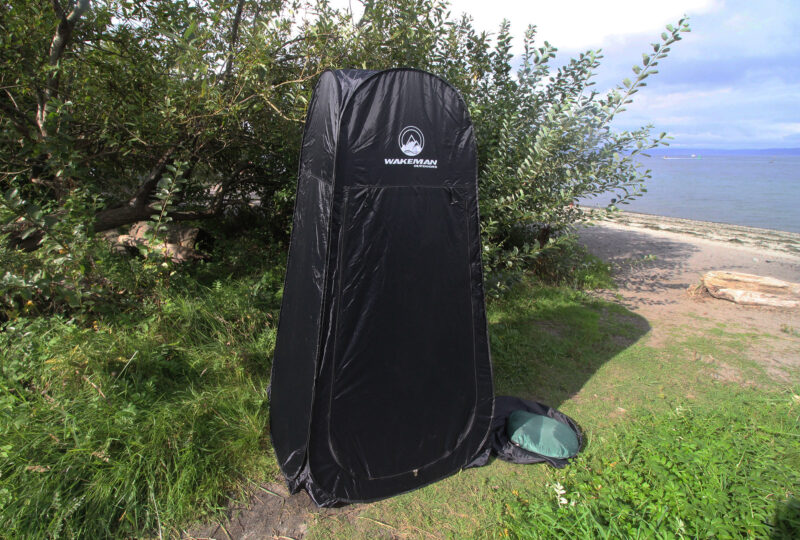 Photographs by Christopher Cunningham
Photographs by Christopher CunninghamMost privacy tents are made to accommodate stand-up showering—this one is 74 1⁄2″ tall, and much larger than what I was hoping to find. When stowed in its 23 1⁄2″ bag (seen here on the ground to the right), this larger tent weighs 4 lbs 10 oz. By contrast, the 51″-tall Pankay pop-up tent, which fits into the smaller green bag seen here, folds down to 14″ in diameter and weighs just 1 lb 1 oz.
The tent is made of a lightweight 190T (T = threads per inch) polyester fabric. The sides are 51″ tall and the top has a diameter of 36″. The hat-like crown adds about 2 1⁄2″ to the overall height and rests on top of the occupant’s head without restricting mobility—I can easily turn my head to see out in every direction without having the whole tent rotate. A 2″-tall band of black mesh between the top and sides provides ventilation and a view out without compromising privacy. There is a webbing strap over the crown so that the tent can be hung up if a fixed location is desired. Three flexible hoops give the tent its cylindrical shape; the touch of a magnet indicates they are all made of steel.
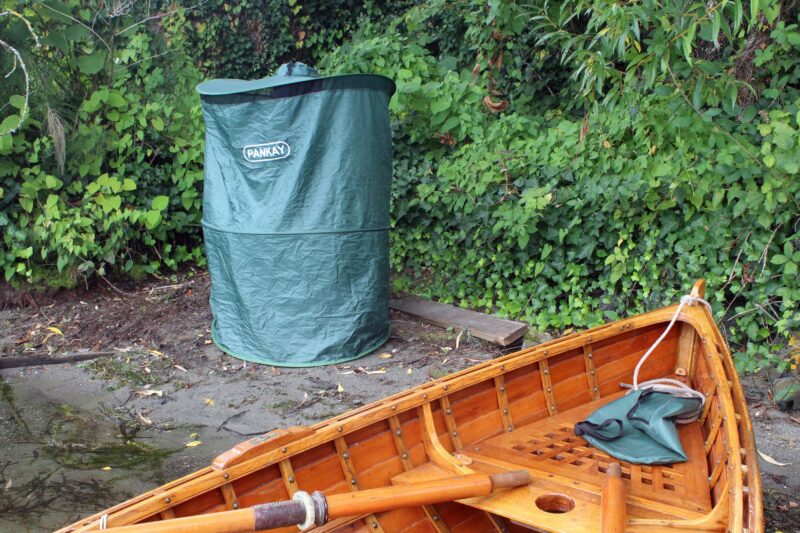
The Pankay pop-up is just the right size to carry on board a small, open boat. It takes only 20 seconds to set up, from opening its bag to having it in place. Taking it down and getting it zipped back in its bag takes 40 seconds.
When the tent is collapsed to be put away, the side’s three hoops, brought together, can be twisted and folded to reduce their diameter from 36″ to about 14″. Pankay provides an illustration and a video on the folding technique: it’s a bit like folding a bandsaw blade but different enough that it took me a while to get the knack. In its zippered storage bag, the tent makes a compact, easily stowed package that weighs under 17 oz.
The tent, along with my retractable portable toilet as a seat, made a very comfortable dressing room at the boat festival. I set up behind a booth, out of the main flow of foot traffic but not entirely hidden from view. While I was seated, the sides of the tent rested on the ground, providing complete coverage. Having the tent resting on my head wasn’t at all a nuisance. I could pull T-shirts off and on without trouble.
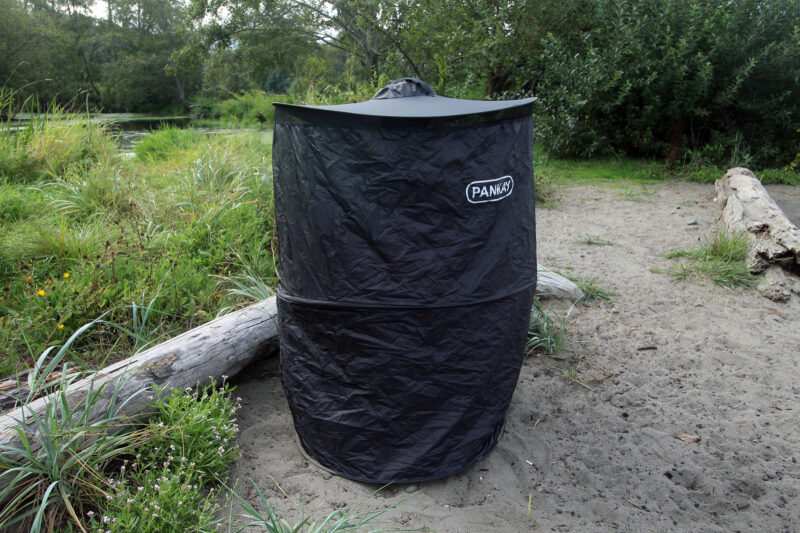
While the green tent required only seam sealer applied to the crown’s seams, the black pop-up’s top wasn’t made from waterproof material and needed an application of water-repellent treatment to keep the inside dry when subjected to a garden-hose shower.
While I was using the tent I discovered that it was a rather pleasant place to be. The air inside was still, and the mesh provided an all-around view. After the festival, I used it to sit in the rain and enjoyed the tent’s warm interior and the sound of the raindrops on its top. On other occasions I discovered how easy it was to use my phone while I was shielded from the glare of the sky, whether it was clear or cloudy. In that small, protected space with my hands free, I could comfortably have a bite to eat, write notes, or work with my camera. All I needed to shoot photos was to create a small circular hole in the side, so I used a hot knife to cut and seal the fabric edge. There was room in the tent for me to set up my camera on its tripod to hold the lens at the hole while I viewed its display screen. The hole hasn’t been a problem in my rainfall tests, so I’ve left it without a cover.
The tent is available in both green and black. I bought both, believing the company’s promotional material indicating that both versions were waterproof. The tents did, indeed, keep a light rainfall at bay, but when I later created an artificial deluge with a garden-hose sprayer in my backyard, the seams of the crowns, which are neither taped nor coated by the manufacturer, quickly leaked.
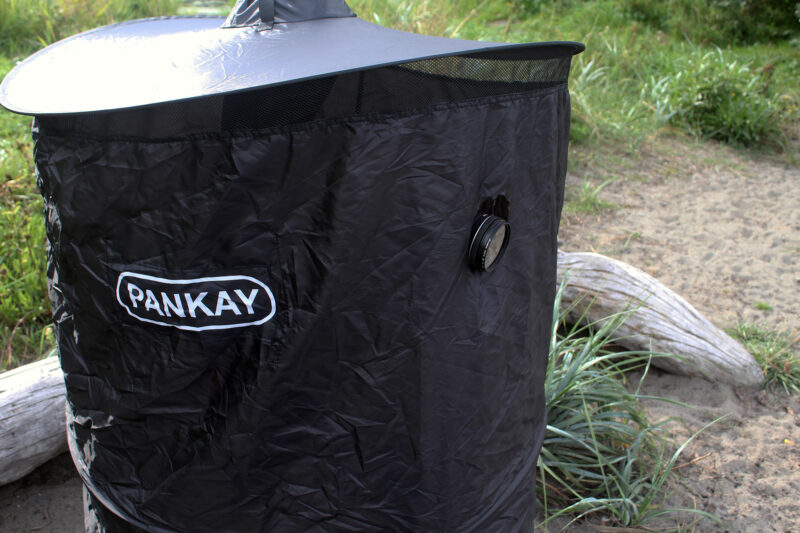
I cut and sealed a small hole in the side of the black tent for taking photos, thinking I might get some good wildlife shots while hidden from view. I plan to make a similar hole in the green tent for safely using my camera when it’s raining.
I first tried a water-based urethane seam sealer without good results and scrubbed it off. I did achieve leak-free seams using GearAid’s Aqua Seal +FD although this thicker sealant doesn’t flow into the seams and needs to be brushed on thoroughly. After the first application, shower tests revealed a few stray leaks that required a second application of the Aqua Seal. (It’s important to dust cured Aqua Seal to keep it from sticking to itself; I used crushed blackboard chalk.)
With the crown seams fully sealed, my home-made monsoon tests were successful for the green tent. Water streaming off the tent’s top flowed over the edge, away from the mesh, leaving the interior dry. Angled spray, simulating wind-blown rain, could be kept out of the tent by tilting the top in the direction of the spray to block it.
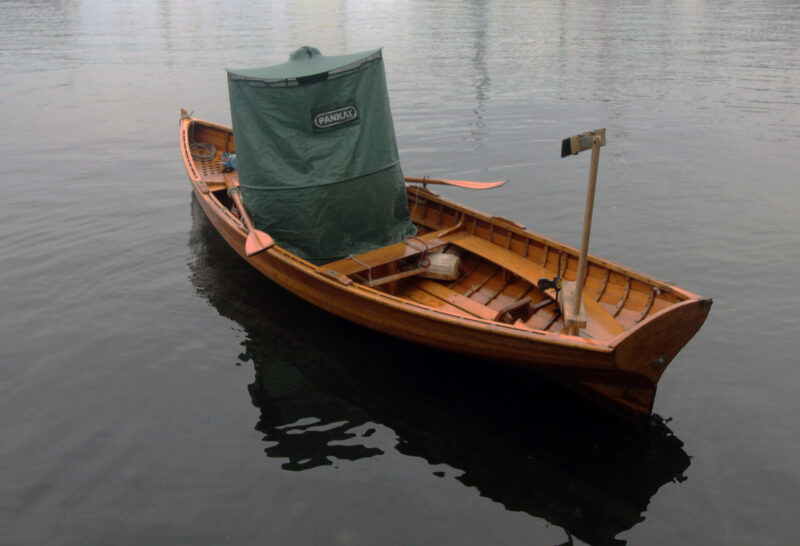
I made a rain canopy for my Whitehall, but it takes a lot of time to set up and take down. The pop-up tent is much quicker to assemble and provides better protection from the elements.
The seams of the black tent no longer leaked, but the underside of the brim glistened with minute beads of water. There were no drips, but the fabric was evidently not as waterproof as the brim of the green tent. I took a deeper look at the technical details and for the black version there were these two lines: “Water Resistance Level/Waterproof” and “Is Waterproof/False.” The details for the green version had “True” instead of “False.”
To increase the black tent’s effectiveness in wet weather, I treated the top with a water-repellent spray that is free of silicone and PFOA (Perfluorooctanoic acid, a harmful “forever chemical”). The spray dries quickly, and I applied it twice. While that seems to have remedied the transmission of water, I’d recommend the green tent.
In weather foul or fair, the green version of Pankay’s collapsible shelter is a good match for small open boats. Easily stowed and deployed in seconds, it will provide privacy and a refuge from the elements. If you think you’ll look silly using the pop-up, you can avoid embarrassment by fleeing the scene while continuing to wear it, thus making your escape unrecognized.![]()
Christopher Cunningham is editor at large for Small Boats.
Pankay’s Pop Up Tent is available from Amazon for $18.79 in two colors: green (waterproof) and black.
Is there a product that might be useful for boatbuilding, cruising, or shore-side camping that you’d like us to review? Please email your suggestions.
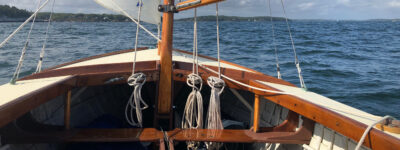
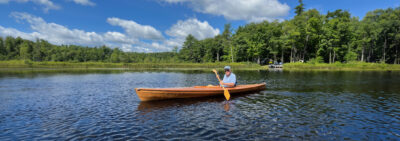
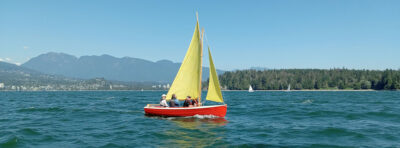

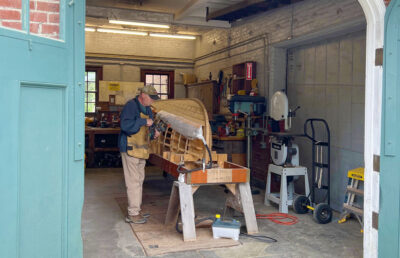
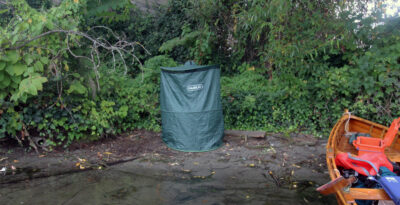


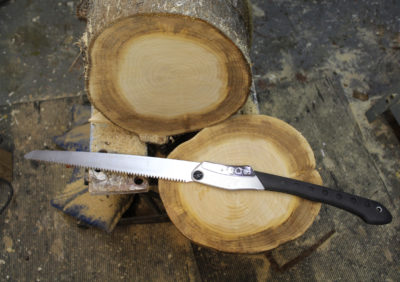
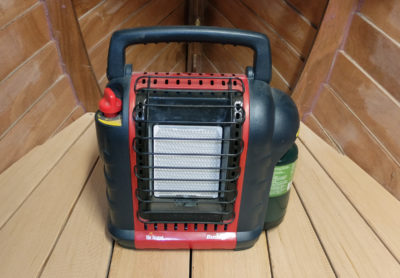
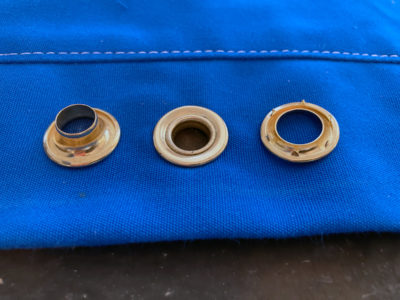
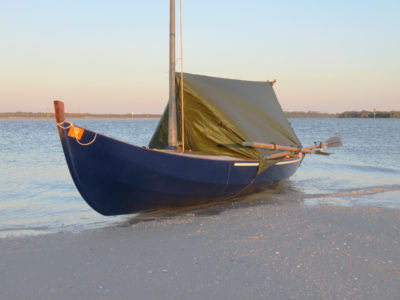
Join The Conversation
We welcome your comments about this article. If you’d like to include a photo or a video with your comment, please email the file or link.